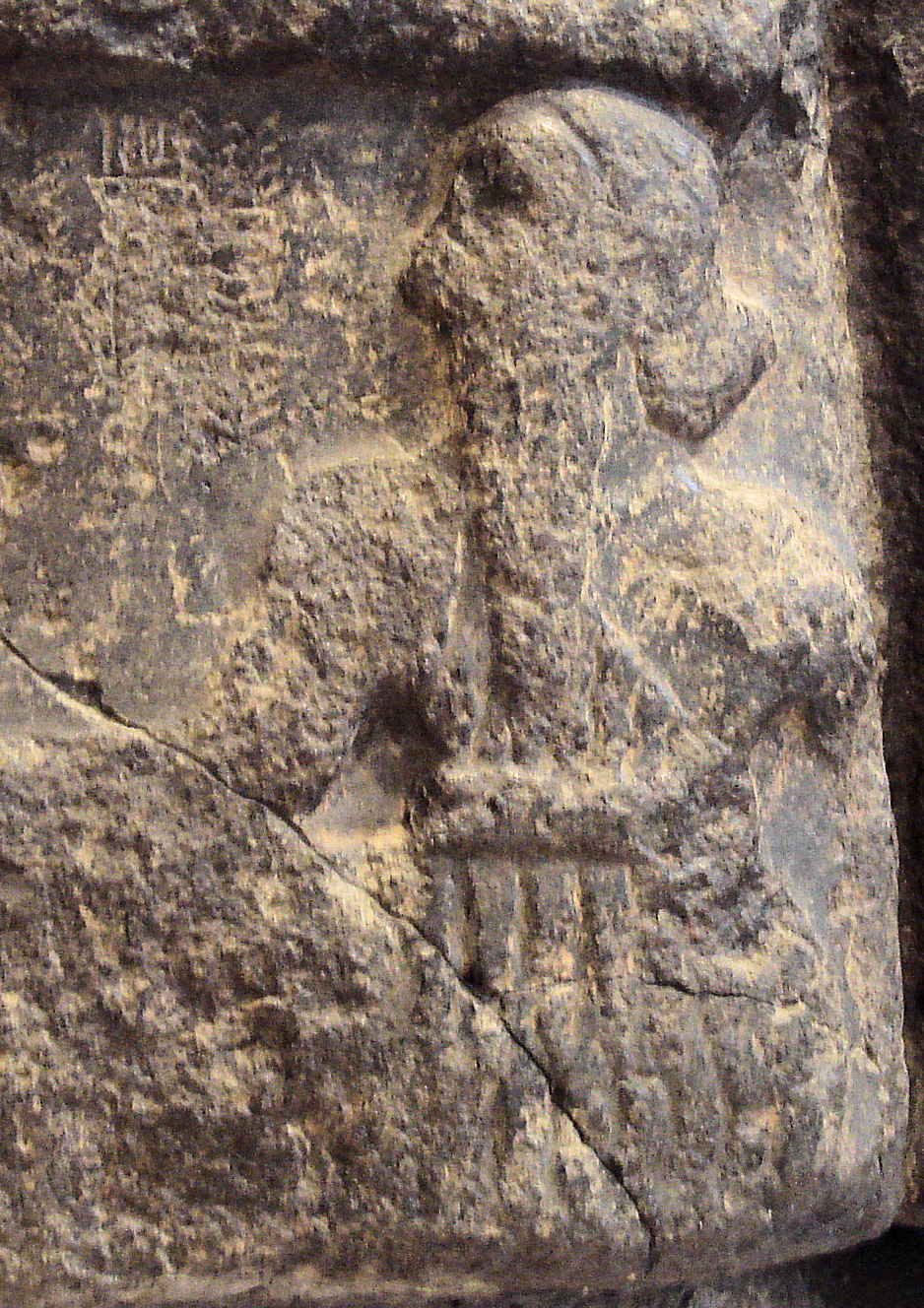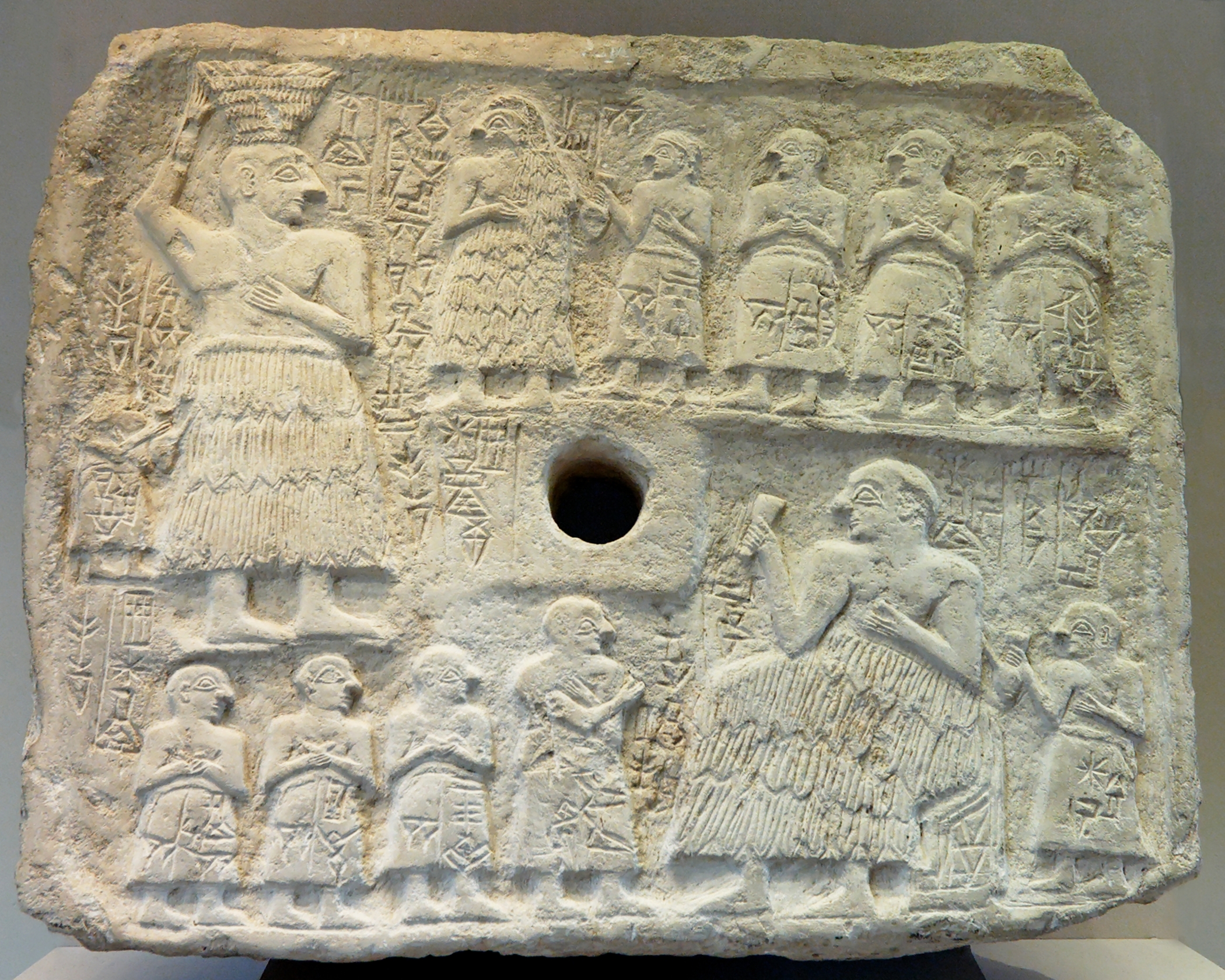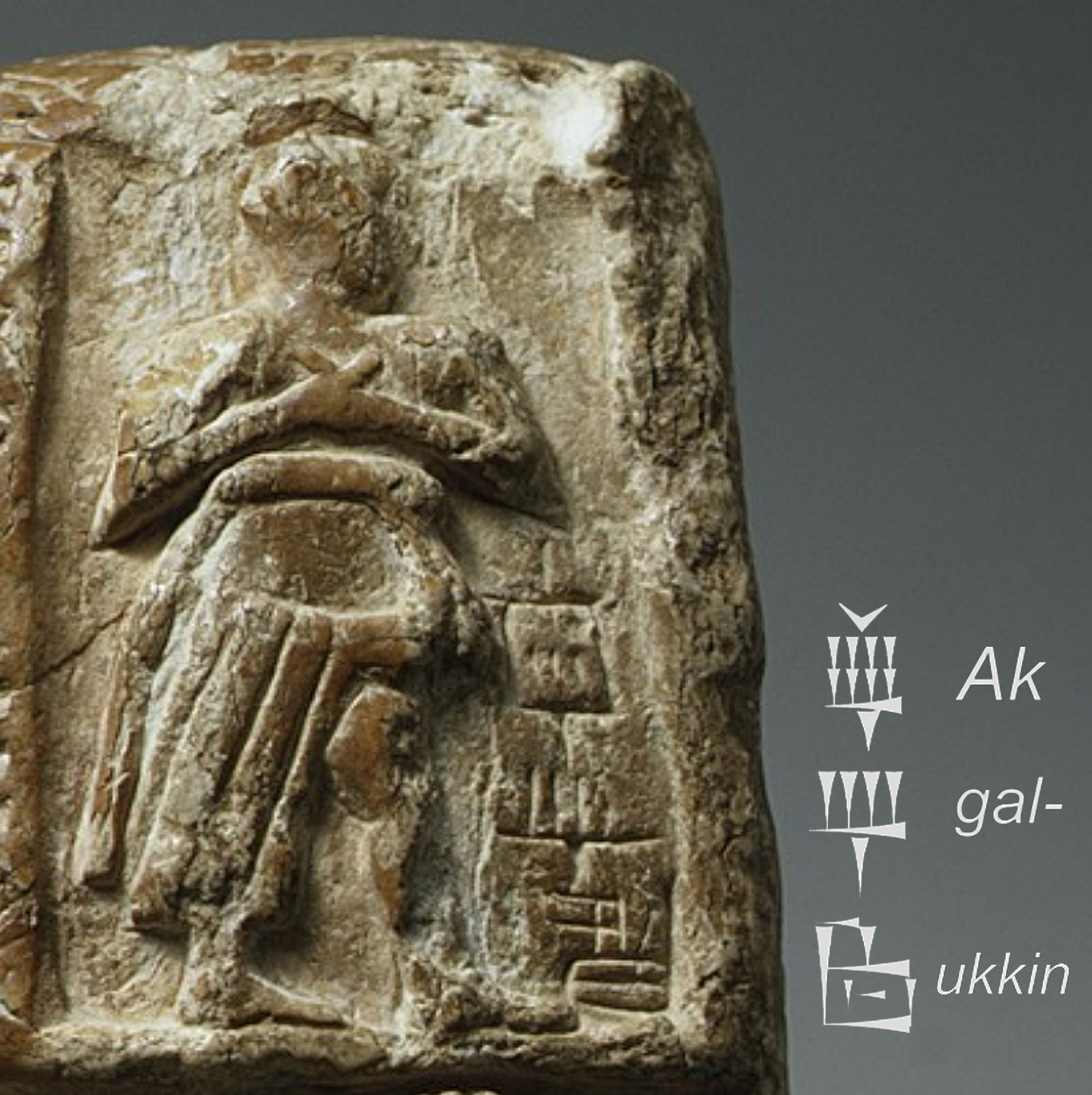|
Rimush
Rimush (or Rimuš, ''Ri-mu-uš''; died 2270 BC) was the second king of the Akkadian Empire. He was the son of Sargon of Akkad. He was succeeded by his brother Manishtushu, and was an uncle of Naram-Sin of Akkad. Naram-Sin posthumously deified Sargon and Manishtushi but not his uncle. His sister was Enheduana, considered the earliest known named author in world history. Little is known about his brother Shu-Enlil. There was a city, Dur-Rimuš (Fortress of Rimush), located near Tell Ishchali and Khafajah. It was known to be a cult center of the storm god Adad. Biography According to the ''Sumerian King List'', his reign lasted nine years (though variant copies read seven or fifteen years). There is one surviving year-name for an unknown year of his reign: ''mu ud-nun / adab hul-a'' "year in which Adab was destroyed". Tradition gives that he was assassinated, as recorded in the '' Bārûtu'', a compendium of extispicy dared to the first millennium BC: "If the heart is like a ... [...More Info...] [...Related Items...] OR: [Wikipedia] [Google] [Baidu] |
Akkadian Empire
The Akkadian Empire () was the first known empire, succeeding the long-lived city-states of Sumer. Centered on the city of Akkad (city), Akkad ( or ) and its surrounding region, the empire united Akkadian language, Akkadian and Sumerian language, Sumerian speakers under one rule and exercised significant influence across Mesopotamia, the Levant, and Anatolia, sending military expeditions as far south as Dilmun and Magan (civilization), Magan (modern United Arab Emirates, Saudi Arabia, Bahrain, Qatar and Oman) in the Arabian Peninsula.Mish, Frederick C., Editor in Chief. "Akkad" ''iarchive:webstersninthne000merr, Webster's Ninth New Collegiate Dictionary''. ninth ed. Springfield, MA: Merriam-Webster 1985. ). The Akkadian Empire reached its political peak between the 24th and 22nd centuries BC, following the conquests by its founder Sargon of Akkad. Under Sargon and his successors, the Akkadian language was briefly imposed on neighboring conquered states such as Elam and Guti ... [...More Info...] [...Related Items...] OR: [Wikipedia] [Google] [Baidu] |
Naram-Sin Of Akkad
Naram-Sin, also transcribed Narām-Sîn or Naram-Suen (: '' DNa-ra-am D Sîn'', meaning "Beloved of the Moon God Sîn", the "𒀭" a determinative marking the name of a god; died 2218 BC), was a ruler of the Akkadian Empire, who reigned –2218 BC ( middle chronology), and was the third successor and grandson of King Sargon of Akkad. Under Naram-Sin the empire reached its maximum extent. He was the first Mesopotamian king known to have claimed divinity for himself, taking the title "God of Akkad", and the first to claim the title " King of the Four Quarters". His military strength was strong as he crushed revolts and expanded the empire to places like Turkey and Iran. He became the patron city god of Akkade as Enlil was in Nippur. His enduring fame resulted in later rulers, Naram-Sin of Eshnunna and Naram-Sin of Assyria as well as Naram-Sin of Uruk, assuming the name. Biography Naram-Sin was a son of Manishtushu. He was thus a nephew of King Rimush and grandson of Sarg ... [...More Info...] [...Related Items...] OR: [Wikipedia] [Google] [Baidu] |
Lagash
Lagash (; cuneiform: LAGAŠKI; Sumerian language, Sumerian: ''Lagaš'') was an ancient city-state located northwest of the junction of the Euphrates and Tigris rivers and east of Uruk, about east of the modern town of Al-Shatrah, Iraq. Lagash (modern Al-Hiba in Dhi Qar Governorate) was one of the oldest cities of the Ancient Near East. The ancient site of Nina (Tell Zurghul) is around away and marks the southern limit of the state. Nearby Girsu (modern Telloh), about northwest of Lagash, was the religious center of the Lagash state. The Lagash state's main temple was the E-ninnu at Girsu, dedicated to the god Ningirsu. The Lagash state incorporated the ancient cities of Lagash, Girsu, Nina. History Though some Uruk period pottery shards were found in a surface survey, significant occupation at the site of Lagash began early in the 3rd Millennium BC, in the Early Dynastic Period (Mesopotamia), Early Dynastic I period (c. 2900–2600 BC), surface surveys and excavations show tha ... [...More Info...] [...Related Items...] OR: [Wikipedia] [Google] [Baidu] |
Sargon Of Akkad
Sargon of Akkad (; ; died 2279 BC), also known as Sargon the Great, was the first ruler of the Akkadian Empire, known for his conquests of the Sumerian city-states in the 24th to 23rd centuries BC.The date of the reign of Sargon is highly uncertain, depending entirely on the (conflicting) regnal years given in the various copies of the Sumerian King List, specifically the uncertain duration of the Gutian dynasty. The added regnal years of the Sargonic and the Gutian dynasties have to be subtracted from the accession of Ur-Nammu of the Third Dynasty of Ur, which is variously dated to either 2047 BC ( Short Chronology) or 2112 BC ( Middle Chronology). An accession date of Sargon of 2334 BC assumes: (1) a Sargonic dynasty of 180 years (fall of Akkad 2154 BC), (2) a Gutian interregnum of 42 years and (3) the Middle Chronology accession year of Ur-Nammu (2112 BC). He is sometimes identified as the first person in recorded history to rule over an empire. He was the founder of ... [...More Info...] [...Related Items...] OR: [Wikipedia] [Google] [Baidu] |
Adab (city)
Adab (Sumerian language, Sumerian: ''Adab''ki, spelled UD.NUNKI) was an ancient Sumerian city between Girsu and Nippur, lying about 35 kilometers southeast of the latter. It was located at the site of modern Bismaya or Bismya in the Al-Qādisiyyah Governorate of Iraq. The site was occupied at least as early as the 3rd Millenium BC, through the Early Dynastic, Akkadian Empire, and Ur III empire periods, into the Kassite dynasty, Kassite period in the mid-2nd millennium BC. It is known that there were temples of Ninhursag, Ninhursag/Digirmah, Iskur, Asgi, Inanna and Enki at Adab and that the city-god of Adab was Parag'ellilegarra (Panigingarra) "The Sovereign Appointed by Ellil". Not to be confused with the small, later (Old Babylonian and Sassanian periods) archaeological site named Tell Bismaya, 9 kilometers east of the confluence of the Diyala and the Tigris rivers, excavated by Iraqi archaeologists in the 1980s or Dur-Kurigalzu#Tell_Basmaya, Tell Basmaya, southeast of mode ... [...More Info...] [...Related Items...] OR: [Wikipedia] [Google] [Baidu] |
Manishtushu
Manishtushu (Man-ištušu) (, ''Ma-an-ish-tu-su''; died 2255 BC) was the third (or possibly second) king of the Akkadian Empire, reigning 15 years c. 2270 BC until his death c. 2255 BC. His name means "Who is with him?". He was the son of Sargon of Akkad, Sargon the Great, the founder of the Akkadian Empire, and he was succeeded by his son, Naram-Sin of Akkad, Naram-Sin who also deified him posthumously. A cylinder seal, of unknown provenance, clearly from the reign of Naram-Sin or later, refers to the deified Manishtushu i.e. "(For) the divine Man-istusu: Taribu, the wife of Lugal-ezen, had (this seal) fashioned". Texts from the later Ur III period show offerings to the deified Manishtushu (spelled ᵈMa-iš-ti₂-su or ᵈMa-an-iš-ti₂-su). The same texts mention a town of ᵈMa-an-iš-ti₂-su where there was a temple of Manishtushu. This temple was known in the Sargonic period as Ma-an-iš-t[i-s]uki. Biography Manishtushu was the third king of the Akkadian Empire accordi ... [...More Info...] [...Related Items...] OR: [Wikipedia] [Google] [Baidu] |
Meskigal
Meskigal (, ''mes-ki-g̃al₂-la'') was a Sumerian ruler of the Mesopotamian city of Adab in the mid-3rd millennium BCE, probably circa 2350 BCE. He was contemporary with Lugal-zage-si and the founder of the Akkadian Empire, Sargon of Akkad. Reign His reign falls mainly into the early Akkadian period. There are fragmentary and conflicting information about Meskigal. That he originally was the governor of Adab serving king Lugalzagesi of Uruk, but then changed his allegiance to Sargon of Akkad. Later, inscriptions indicate that he participated in military expeditions under Sargon. Finally, he appear in inscriptions as a rebel against Rimush of Akkad. The timeframe here is quite extensive raising questions. Reign of Lugalzagesi of Uruk It has been suggested that Meskigal had actually defected to the Akkadian Empire, in opposition to Lugal-zage-si. Another known case is Lugalushumgal, who was also a collaborator of the Akkadian Empire. Reign of Sargon of Akkad In a fragmentary ... [...More Info...] [...Related Items...] OR: [Wikipedia] [Google] [Baidu] |
Khafajah
Khafajah or Khafaje (), ancient Tutub, is an archaeological site in Diyala Governorate, Iraq east of Baghdad. Khafajah lies on the Diyala River, a tributary of the Tigris. Occupied from the Uruk period, Uruk and Jemdet Nasr periods through the end of the Old Babylonian Empire, it was under the control of the Akkadian Empire and then the Third Dynasty of Ur in the 3rd millennium BC. It then became part of the empire of the city-state of Eshnunna lying southwest of that city, about from the ancient city of Shaduppum, and near Tell Ishchali, both of which Eshnunna also controlled. It then fell to First Babylonian Empire before falling into disuse. The city of Tutub is mentioned in a fragmentary Sumerian temple hymn "... To the shrine Nippur, to the Duranki , To ..., to the brickwork of Tutub , To the lofty Abzu ...". Archaeology Khafajah was excavated for 7 seasons between 1930 and 1937 by an Oriental Institute of Chicago team led by Henri Frankfort with Thorkild Jacobsen, Conrad ... [...More Info...] [...Related Items...] OR: [Wikipedia] [Google] [Baidu] |
Sumerian King List
The ''Sumerian King List'' (abbreviated ''SKL'') or ''Chronicle of the One Monarchy'' is an ancient Composition (language), literary composition written in Sumerian language, Sumerian that was likely created and redacted to legitimize the claims to power of various city-states and kingdoms in southern Mesopotamia during the late third and early second millennium BC. It does so by repetitively listing Sumerian cities, the kings that ruled there, and the lengths of their reigns. Especially in the early part of the list, these reigns often span thousands of years. In the oldest known version, dated to the Third Dynasty of Ur, Ur III period () but probably based on Akkadian Empire, Akkadian source material, the ''SKL'' reflected a more linear transition of power from Kish (Sumer), Kish, the first city to receive kingship, to Akkad (city), Akkad. In later versions from the Old Babylonian Empire, Old Babylonian period, the list consisted of a large number of cities between which kingshi ... [...More Info...] [...Related Items...] OR: [Wikipedia] [Google] [Baidu] |
Umma
Umma () in modern Dhi Qar Province in Iraq, was an ancient city in Sumer. There is some scholarly debate about the Sumerian and Akkadian names for this site. Traditionally, Umma was identified with Tell Jokha. More recently it has been suggested that it was located at Umm al-Aqarib, less than to its northwest or was even the name of both cities. One or both were the leading city of the Early Dynastic kingdom of Gišša, with the most recent excavators putting forth that Umm al-Aqarib was prominent in EDIII but Jokha rose to preeminence later. The town of KI.AN was also nearby. KI.AN, which was destroyed by Rimush, a ruler of the Akkadian Empire. There are known to have been six gods of KI.AN including Gula (goddess), Gula KI.AN and Shara (god), Sara KI.AN. The tutelary gods of Umma were Sara and Ninura. It is known that the ED ruler Ur-Lumma built, a temple to the god Enki, Enki-gal and one to the god Nagar-pa'e at Umma. In the early Sumerian literary composition ''Inanna's ... [...More Info...] [...Related Items...] OR: [Wikipedia] [Google] [Baidu] |
King Of Sumer
The ''Sumerian King List'' (abbreviated ''SKL'') or ''Chronicle of the One Monarchy'' is an ancient Composition (language), literary composition written in Sumerian language, Sumerian that was likely created and redacted to legitimize the claims to power of various city-states and kingdoms in southern Mesopotamia during the late third and early second millennium BC. It does so by repetitively listing Sumerian cities, the kings that ruled there, and the lengths of their reigns. Especially in the early part of the list, these reigns often span thousands of years. In the oldest known version, dated to the Third Dynasty of Ur, Ur III period () but probably based on Akkadian Empire, Akkadian source material, the ''SKL'' reflected a more linear transition of power from Kish (Sumer), Kish, the first city to receive kingship, to Akkad (city), Akkad. In later versions from the Old Babylonian Empire, Old Babylonian period, the list consisted of a large number of cities between which kingshi ... [...More Info...] [...Related Items...] OR: [Wikipedia] [Google] [Baidu] |








